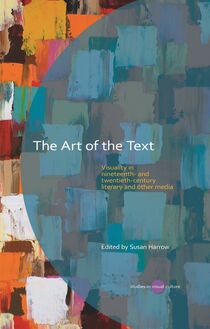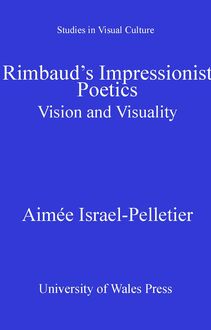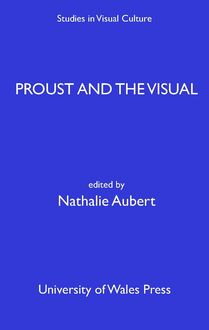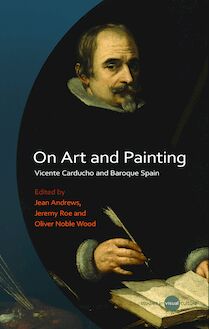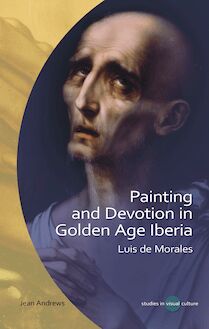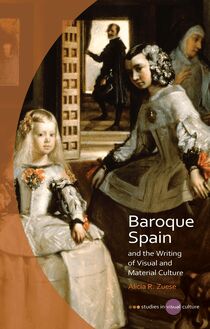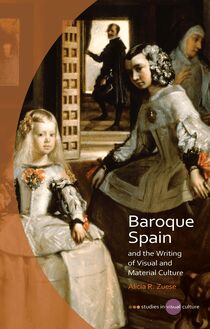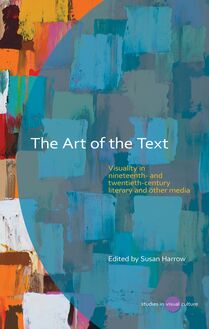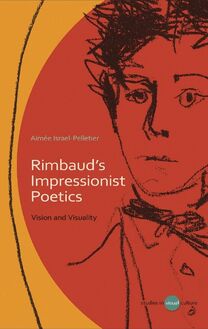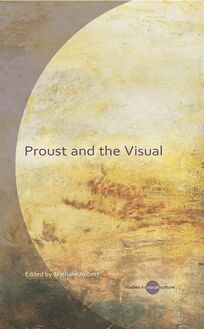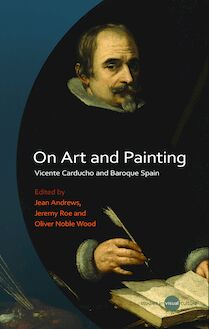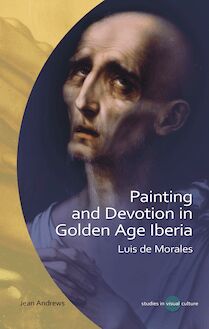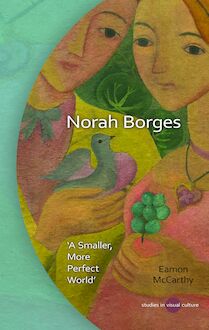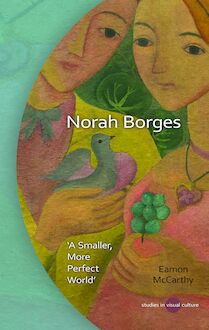-
 Univers
Univers
-
 Ebooks
Ebooks
-
 Livres audio
Livres audio
-
 Presse
Presse
-
 Podcasts
Podcasts
-
 BD
BD
-
 Documents
Documents
-
- Cours
- Révisions
- Ressources pédagogiques
- Sciences de l’éducation
- Manuels scolaires
- Langues
- Travaux de classe
- Annales de BEP
- Etudes supérieures
- Maternelle et primaire
- Fiches de lecture
- Orientation scolaire
- Méthodologie
- Corrigés de devoir
- Annales d’examens et concours
- Annales du bac
- Annales du brevet
- Rapports de stage
La lecture à portée de main
Découvre YouScribe en t'inscrivant gratuitement
Je m'inscrisDécouvre YouScribe en t'inscrivant gratuitement
Je m'inscrisEn savoir plus
En savoir plus

Description
Introduction 1 Language and Visual Realism in the Poesies 2 Unsettled Terrain. Realism and Impressionism 1860s - 1870s 3 Impressionism and the New Look 4 Vision, Visuality, Affect 5 After Poetry
Sujets
Informations
| Publié par | University of Wales Press |
| Date de parution | 15 octobre 2012 |
| Nombre de lectures | 0 |
| EAN13 | 9780708325360 |
| Langue | English |
| Poids de l'ouvrage | 2 Mo |
Informations légales : prix de location à la page 0,1500€. Cette information est donnée uniquement à titre indicatif conformément à la législation en vigueur.
Extrait
Studies in Visual Culture
Rimbaud’s Impressionist
Poetics
Vision and Visuality
Aimée Israel-Pelletier
University of Wales Press
Demy cover St in Vis Cult template.indd 1 11/10/2012 11:41:54Demy cover St in Vis Cult template.indd 2 11/10/2012 11:41:54RIMBAUD’S IMPRESSIONIST POETICS
00 Prelims Rimbaud_2012_9_11.indd 1 9/11/2012 10:52:25 AMStudieS in ViSual Culture
Serie S editor S
Margaret t opping
Queen’s University, Belfast
r achael Langford
Cardif University
Giuliana Pieri
Royal Holloway, University of London
editori AL Bo Ard
Mieke Bal
University of Amsterdam
Paul Cooke
University of Leeds
Anne Freadman
The University of Melbourne
Andrea Noble
University of Durham
María Pilar r odríguez
Universidad de Deusto
eric t hau
University of Hawai’i at Manoa
00 Prelims Rimbaud_2012_9_11.indd 2 9/11/2012 10:52:25 AMStudieS in ViSual Culture
RIMBAUD’S IMPRESSIONIST POETICS
Vision and Visuality
Aimée Israel-Pelletier
Cardif
University of Wales Press
2012
00 Prelims Rimbaud_2012_9_11.indd 3 9/11/2012 10:52:25 AM© Aimée Israel-Pelletier, 2012
All rights reserved. No part of this book may be reproduced in any material
form (including photocopying or storing it in any medium by electronic
means and whether or not transiently or incidentally to some other use of
this publication) without the written permission of the copyright owner.
Applications for the copyright owner’s written permission to reproduce any
part of this publication should be addressed to the University of Wales Press,
10 Columbus Walk, Brigantine Place, Cardif CF10 4UP.
www.uwp.co.uk
British Library CIP Data
A catalogue record for this book is available from the British Library
ISBN 978-0-7083-2535-3
e-ISBN 978-0-7083-2536-0
The right of Aimée Israel-Pelletier to be identifed as author of this work has
been asserted in accordance with sections 77 and 79 of the Copyright, Designs
and Patents Act 1988.
Typeset in Wales by Eira Fenn Gaunt, Cardif
Printed by CPI Antony Rowe, Chippenham, Wiltshire
00 Prelims Rimbaud_2012_9_11.indd 4 9/11/2012 10:52:25 AMFor Philippe A. Pelletier
00 Prelims Rimbaud_2012_9_11.indd 5 9/11/2012 10:52:25 AM00 Prelims Rimbaud_2012_9_11.indd 6 9/11/2012 10:52:25 AMContents
Series Editors’ Preface ix
Acknowledgementsxi
Note on Editions of R imbaud’s Workxiii
Introduction1
1 Language and Visual Realism in the Poésies 11
2 Unsettled Terrain: Realism and Impressionism 1860s–1870s 51
3 Impressionism and the New Look73
4 Vision, Visuality, Afect 121
5 After Poetry 153
Notes 165
Select Bibliography181
Index191
00 Prelims Rimbaud_2012_9_11.indd 7 9/11/2012 10:52:26 AM00 Prelims Rimbaud_2012_9_11.indd 8 9/11/2012 10:52:26 AMSeries Editors’ Preface
Studies in Visual Culture provides a forum for ground-breaking enquiry into
visual-cultural production in its social, historical and cultural contexts. The
series places particular emphasis on the exchanges, transactions and
displacements that link Europe to wider global contexts across the visual-cultural
feld. The series seeks to promote critical engagement with visual media as
ideological and cultural as well as aesthetic constructs, and foregrounds the
relationship of visual cultures to other felds and discourses, including cultural
history, literary production and criticism, philosophy, gender and sexuality
research, journalism and media studies, migration and mobility studies, social
sciences, and politics. The Studies in Visual Culture series thus focuses on
exploring synergies and key debates between disciplines, concepts and
theoretical approaches, and ofers an exciting new arena for testing and
extending disciplinary, theoretical and conceptual boundaries.
00 Prelims Rimbaud_2012_9_11.indd 9 9/11/2012 10:52:26 AM00 Prelims Rimbaud_2012_9_11.indd 10 9/11/2012 10:52:26 AMAcknowledgements
This book has been long in the making and so my thanks go back through
the years. First and foremost, I would like to thank the University of Rochester
for awarding me a Bridging fellowship that gave me access to the great
resources of the programme for Visual and Cultural Studies. I had the good
fortune to be present in 1989 and in the early 1990s when visionaries like
Michael Ann Holly, Mieke Bal and Norman Bryson were establishing VCS and
happily fomenting interdisciplinarity. I want to also thank Grace Seiberling
who in those early years opened my eyes to the rich subject of Impressionism.
The experience at VCS continues to be a source of profound scholarly
satisfac tion for me.
I would like to thank deans Ruth V. Gross, Beth S. Wright and Kimberly van
Noort for the support they gave this project at diferent stages. I thank
especially Ruth V. Gross for her indispensable friendship over the years. She
remains my guiding light.
I wish also to acknowledge the invaluable help of the library staf of the
University of Texas at Arlington, particularly the departments of Inter Library
Loans and of Acquisitions. Their care manifested itself in so many ways and
I am sincerely grateful to them. I also extend very warm thanks to the staf
of the University of Wales Press for the support they provided this project.
My heartfelt gratitude goes to Chloé M. Pelletier. Her perfect love and
many talents have cheered and sustained me during difcult times. She has
taught me much about how to read visual images and has made ‘the space
of painting’ a rich terrain on which I cautiously but joyfully tread. I want to
also express thanks to Pauline M. Pelletier who has inspired me to do as she
does – focus, forge ahead and not look back. To my remarkable mother,
Pauline Israel, and to my dear late father, Saul Israel, I will always be most
grateful. They are the wind at my back.
00 Prelims Rimbaud_2012_9_11.indd 11 9/11/2012 10:52:26 AMAcknowledgements
Philippe A. Pelletier has been my chief inspiration. His insights into Rimbaud
and the decision Rimbaud took to ‘drop out’ of poetry have informed my
readings and helped me to demystify so many aspects of the literary enterprise.
His always illuminating and spot-on challenges, particularly during the fnal
stages of writing, were important to me. To Philippe I am profoundly grateful.
Without his enthusiasm, his belief in the project and his close reading of the
manuscript this book would not be the immense source of pleasure it has
been for me.
xii
00 Prelims Rimbaud_2012_9_11.indd 12 9/11/2012 10:52:26 AMNote on Editions of R imbaud’s Work
All references to Rimbaud’s work throughout this book, unless otherwise
noted, are placed in parentheses in the text and are from the edition Œuvres
complètes, édition établie par André Guyaux (Paris: Éditions Gallimard, 2009).
The recommended English translation of Rimbaud’s works is Rimbaud:
Complete Works, Selected Letters, a Bilingual Edition, translated by Wallace
Fowlie, revised and edited by Seth Whidden (Chicago: The University of
Chicago Press, 2005).
00 Prelims Rimbaud_2012_9_11.indd 13 9/11/2012 10:52:26 AM00 Prelims Rimbaud_2012_9_11.indd 14 9/11/2012 10:52:26 AMI wanted to recover in my literary criticism a confdent conviction of reality,
without giving up the power of literature to sidestep or evade the quotidian
and without giving up a minimally sophisticated understanding that any text
depends upon the absence of the bodies and voices that it represents. I wanted
the touch of the real in the way that in an earlier period people wanted the
touch of the transcendent.
Stephen Greenblatt, ‘The Touch of the Real’
C’est une raison, en vérité, toute simple; et qui est que poésie et poème ne sont
nullement la même chose; et que, si la poésie peut, en surgissant dans des
mots, transcender efectivement une situation historique, le poème, lui, qui est
le lieu où cette épiphanie se produit parfois, mais tout aussitôt se perd, demeure
au plan de ces circonstances, et reste donc déterminé, très en profondeur, par
les catégories de pensée, les valeurs, les formes de la culture du moment où
son auteur l’a écrit.
Yves Bonnefoy, ‘L’Histoire et l’invention littéraire’
00 Prelims Rimbaud_2012_9_11.indd 15 9/11/2012 10:52:26 AM00 Prelims Rimbaud_2012_9_11.indd 16 9/11/2012 10:52:26 AMIntroduction
Rimbaud’s poetry is intensely visual. It is other things as well. It has movement
and momentum; it carries meaning, expresses a range of emotion. In mood
and attitude it is often famboyant and just as often remarkably quiet and
subtle. Yet, whatever we might say about it, a poem’s visual qualities always
command attention. Vision is the structuring trope that most insistently
communicates the poet’s sensibility and his approach to the world. Rimbaud
exhibits a sensibility so tuned in to the visual that all but a few poems privilege
images at the expense of words. What I mean is that Rimbaud generally calls
attention to language’s ability to convey striking images over and above its
discursive function. I draw the artifcial distinction between words and images
to facilitate the discussion of this privileging and not because I believe that
Rimbaud has managed to tease word and image apart. A verbal image is an
exploration of the fgurative function of language and not an icon. Words
and images have been interacting for a long time. Their ongoing dialogue
1is inescapable and it is desirable.
In this book I consider most specifcally the way vision and visuality play
out in Rimbaud’s work and argue for aligning Rimbaud with the aesthetic
practice of the Impressionists. I see Rimbaud’s work and Impressionism as
01 MainText Rimbaud 2012_9_11.indd 1 9/11/2012 8:50:55 AM
Rimbaud’s Impressionist Poetics
modes of cultural expression that emerge at a particularly turbulent time in
France’s history. I use the terms vision and visuality to refer to ways of appre
hending the world. I understand vision as the sense of sight, the physical
operations of looking. I conceive visuality as a culturally
-
 Univers
Univers
-
 Ebooks
Ebooks
-
 Livres audio
Livres audio
-
 Presse
Presse
-
 Podcasts
Podcasts
-
 BD
BD
-
 Documents
Documents
-
Jeunesse
-
Littérature
-
Ressources professionnelles
-
Santé et bien-être
-
Savoirs
-
Education
-
Loisirs et hobbies
-
Art, musique et cinéma
-
Actualité et débat de société
-
Jeunesse
-
Littérature
-
Ressources professionnelles
-
Santé et bien-être
-
Savoirs
-
Education
-
Loisirs et hobbies
-
Art, musique et cinéma
-
Actualité et débat de société
-
Actualités
-
Lifestyle
-
Presse jeunesse
-
Presse professionnelle
-
Pratique
-
Presse sportive
-
Presse internationale
-
Culture & Médias
-
Action et Aventures
-
Science-fiction et Fantasy
-
Société
-
Jeunesse
-
Littérature
-
Ressources professionnelles
-
Santé et bien-être
-
Savoirs
-
Education
-
Loisirs et hobbies
-
Art, musique et cinéma
-
Actualité et débat de société
- Cours
- Révisions
- Ressources pédagogiques
- Sciences de l’éducation
- Manuels scolaires
- Langues
- Travaux de classe
- Annales de BEP
- Etudes supérieures
- Maternelle et primaire
- Fiches de lecture
- Orientation scolaire
- Méthodologie
- Corrigés de devoir
- Annales d’examens et concours
- Annales du bac
- Annales du brevet
- Rapports de stage
